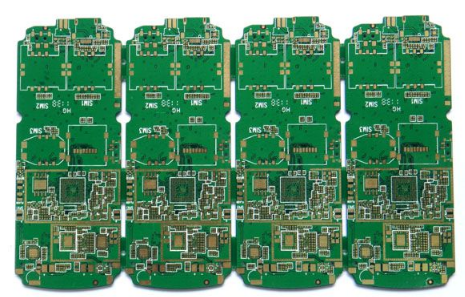The transmission line used in a typical PCB is composed of conductive traces embedded or attached to an insulating material with one or more reference planes. The conductive traces generally use copper materials, and the dielectric uses a type called "FR4". "The glass fiber.
The two most common transmission line structures in digital design systems are microstrip and stripline. Microstrip lines are divided into standard microstrip lines and embedded microstrip lines. The former refers to the wiring on the outer layer of the PCB, which is directly attached to the dielectric plane and exposed to the air. The latter is an improvement of the former, the difference is that the copper wire is covered with a dielectric material. Stripline is a transmission line surrounded by dielectric materials in two conductive plane structures. According to whether the distance between it and the two conductive planes is equal,

it can be divided into symmetrical stripline and asymmetrical stripline.
The local structure of the microstrip line is composed of one side of the dielectric substrate as the central conduction band and the other side as the ground plate. The thickness of the substrate is nine and the width of the central conduction band is W. One strand is made by photolithography technology. This kind of transmission line has simple structure, convenient processing, and easy realization of miniaturization and integration of microstrip circuits, so it is widely used in PCBs.
PCB transmission line principle
The term PCB transmission line can be touched in various occasions of PCB circuit design. Obviously, the PCB transmission line is one of the most important components in the signal integrity analysis, and many analyses are based on this. This article will discuss the related physical foundations of PCB transmission lines.
So, what is a PCB transmission line? The metal wires, waveguides, coaxial wires and PCB traces encountered in engineering applications are the Chuanxuanweng wires. PCB transmission line is usually defined as a transmission system suitable for effective transmission of electrical energy or electrical signals between two or more terminals. One of the two wires of the PCB transmission line is called the signal path, and the other is called the current return path.
What is the behavior of the signal on the PCB transmission line? To make a similar analogy: the transmission of electrical signals on the PCB transmission line is like water flowing through a long rectangular tube, and it flows through the tube in the form of waves, and the electrical signals are also transmitted along the PCB transmission line in the form of waves. In addition, it takes a certain time for water to flow through a pipe of a certain length, so the electrical signal will also take a certain time to be transmitted along the PCB transmission line. Furthermore, the height of the water in the tube is just like the voltage on the PCB transmission line, and the current can be compared to the flow of water.
There are many types of PCB transmission lines, such as axis, waveguide, strip line and microstrip line.